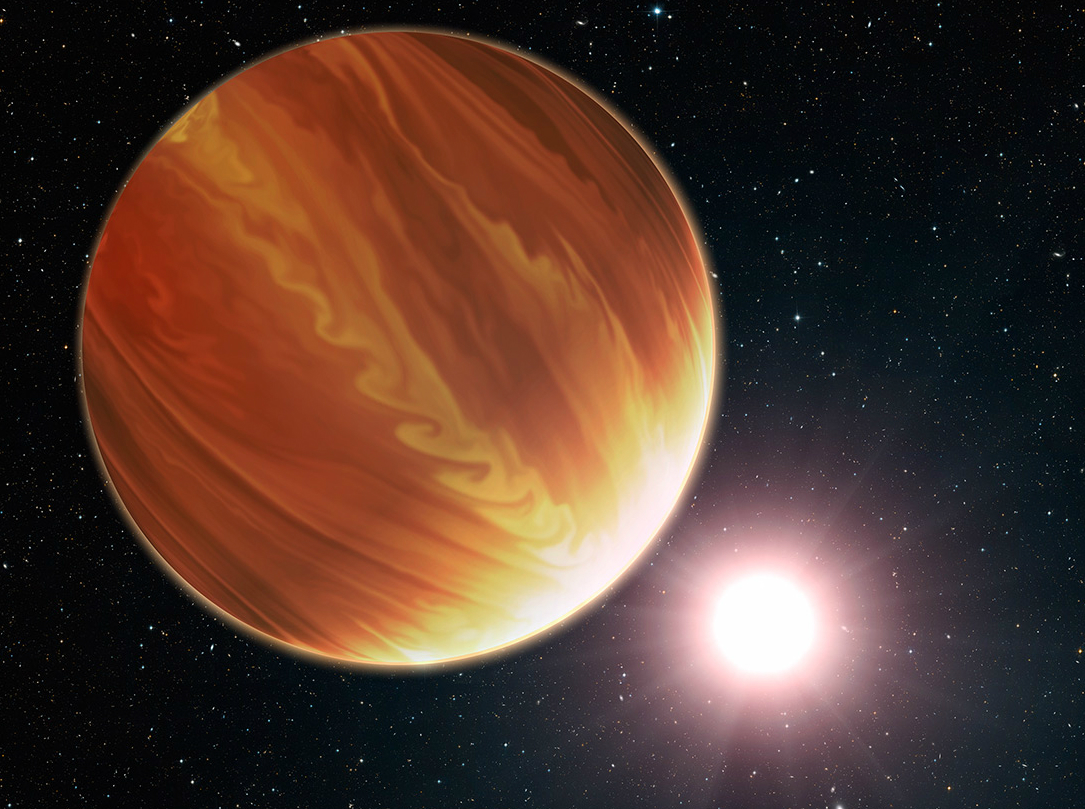A team of Indian astronomers has reported the discovery of a previously unknown exoplanet in the TOI-4603 star system. Its mass is so large that it is located on the very border separating gas giants from brown dwarfs.

TOI-4603 is a star of spectral class F, located at a distance of 730 light-years from Earth. It is about 2.7 times the size of the Sun. The mass of TOI-4603 is 1.7 times, and the luminosity is 9.7 times higher than the solar one. The age of the system is 2 billion years.
While studying the data collected by the TESS telescope, the researchers drew attention to periodic decreases in the brightness of TOI-4603. They indicate that the star has an invisible companion that transits its disk from time to time.
Subsequent analysis allowed to establish the characteristics of this body, which received the designation TOI-4603 b. With similar dimensions to Jupiter, its mass exceeds the mass of the largest planet in the Solar System by 12.9 times, which gives an average density of 14.1 g/cm3. The orbital period of the exoplanet is 7.24 days, and the orbit passes at a distance of 13.5 million km from the star. According to astronomers, the equilibrium temperature of its daytime hemisphere is about 1400 °C.
To date, TOI-4603 b is one of the most massive and dense exoplanets known to scientists. According to its characteristics, it is located almost at the very border separating gas giants from brown dwarfs, which are also often called failed stars. Unlike planets, some thermonuclear reactions involving deuterium and lithium nuclei can occur in the depths of brown dwarfs. But, by astronomical standards, they last very short, after which the brown dwarfs gradually cool down.
According to the researchers, the newly found exoplanet has great scientific value. Its study may provide additional data on the differences between the most massive gas giants and the least massive brown dwarfs.
Earlier we talked about how James Webb measured the temperature of a rocky exoplanet.
Follow us on Twitter to get the most interesting space news in time
https://twitter.com/ust_magazine
